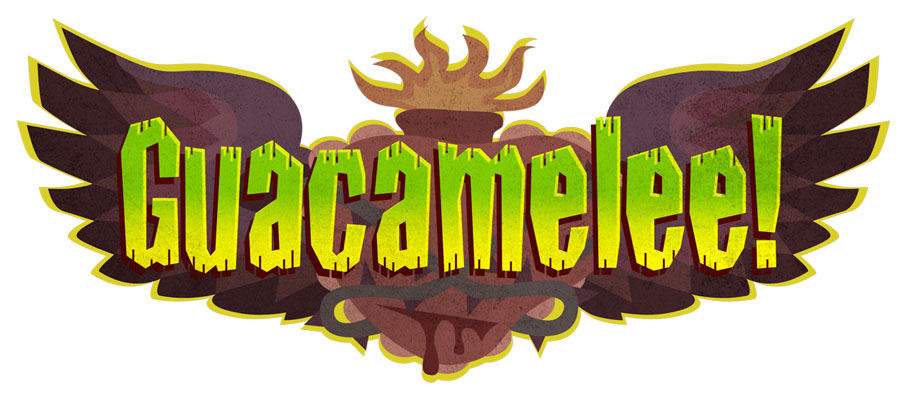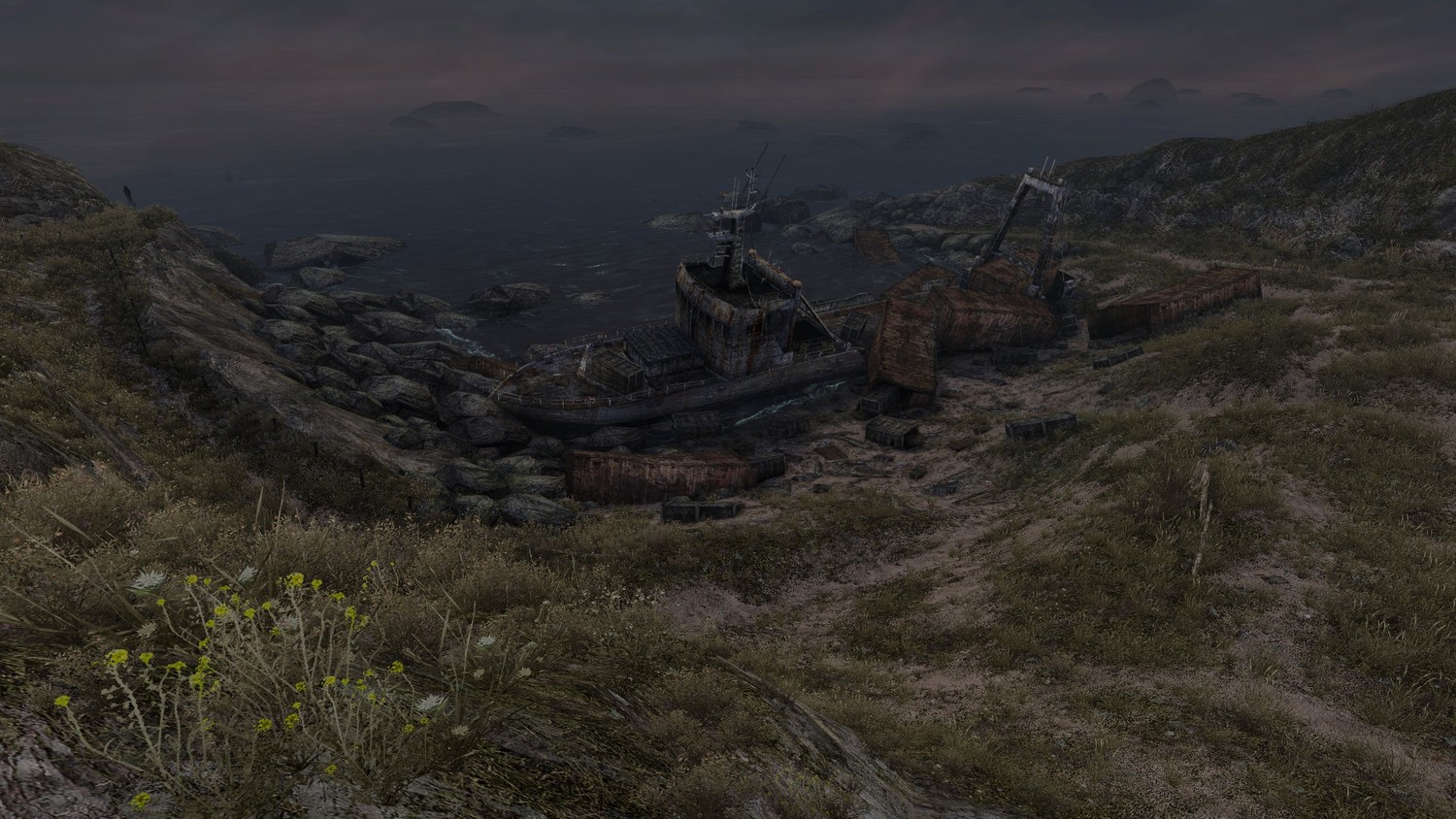
Review: Guacamelee!
Posted by Eric G on April 8th, 2013 | 16 Comments | Tags: Drinkbox Studios , Guacamelee
One of the most blatant signs of how much I’m enjoying a game on my Vita is this notification: “Battery level is low.” A similar notification about my DualShock 3 popped up when I was playing the game on my PS3. This isn’t a case of me never charging my devices. No, this is a case of me playing Guacamelee near-nonstop for the last few days. In the car on the way to an education job fair? Check. At 11:45PM before going to sleep, just to get those last few chests? Check. At 7:45AM, because going back to sleep probably wouldn’t be as much fun as playing Guacamelee? Check. During a ten minute rest period after two hours of intense yard work? Check. I’m going to go ahead and review Guacamelee, highlighting its features, gameplay, sound design, etc. If you’re in a rush and/or don’t feel like reading through the next 800 or so words, just buy the game. You won’t regret it.
Guacamelee is a Mexican-themed 2D platformer with a deep beat-em-up combat system. One of the main mechanics in the game is that you can switch between the living world and the dead world, which reveals different platforms and allows you to attack silhouetted enemies. You’ll see the word ‘Metroidvania’ here and there, which is a term that basically means there are a ton of hidden collectibles and powerups scattered throughout the game. Most areas won’t be accessible at the outset of the game. By progressing through the game and acquiring powerups, you’ll earn special moves that allow you to backtrack and comb the nooks and crannies of each area. All of the intensive searching is made possible by Guacamelee’s world and area maps. Pressing the select button brings up a map of the area you’re playing in. From there, you can check the entire world map by pressing triangle. There are two main towns in Guacamelee and eleven other areas to explore.
The towns, Pueblucho and Santa Luchita have many residents walking around and houses to check out. A few of the townfolk have quests for you to complete. Completing these quests or finding secret chests usually earns you pieces of a heart or a skull. Collecting three heart pieces increases your health, and collecting three skull pieces gives you another stamina square. There are six special moves total in the game, and each one takes a square of stamina to use. Stamina and health both recharge if you’re character is idle, and the time it takes for them to regenerate can be lessened by buying upgrades at any “save table.” These tables are placed throughout areas. Passing by them auto-saves the games, and they also serve as the game’s shop system. A handful of special grapple moves along with health, stamina, and damage buffs can be purchased at any table in the game.
The combat and platforming in Gucamelee are both stellar. I haven’t played a game since Explodemon! (and Mega Man X before it) that has challenged me like Guacamlee has. There are many points throughout the main game where you’ll be tasked to use two, three, even four of the special moves to progress through a level. However, it was in the game’s secret spots where I encountered the most complex platforming sections I’ve ever played. It took me a while to write that sentence, but I couldn’t think of another game that had me swapping dimensions, wall running, goat flying, uppercutting, dodging, double jumping, dash derpderping, and more just to get from one platform to the next. The game’s level design allows for top-shelf platforming; sections that are just hard enough that you’ll try them over and over until you nail ’em.
Warning: Playthrough Preview may contain spoilers.
As for the combat system, I mentioned in my post-PAX post that Drinkbox had figured out the remedy to tired brawling. After playing through the game a few times on Medium and Hard difficulty, I stand behind that statement. About half way through the game, enemies start spawning with barriers around them. Different colors can only be broken by certain special moves. For example, yellow barriers can be broken by a headbutt and red barriers can be broken by a rooster uppercut. Combos are a big deal in Guacamelee, and they’re relatively easy to rack up once you get down the basic combat moves. The square button is used for all of your basic attacks, the circle button activates most of your special moves, and the triangle button grabs enemies when they’re weakened to toss them about. Uppercutting an enemy (up and square) will send him into the air, where you can jump up and start beating on it until it’s weakened, then grab it (triangle) and throw it at another enemy, frog slam (down and circle) into them both, and keep the combo going by rooster uppercutting (up and circle) them back into the air… lather, rinse, repeat. There’s a dojo in Santa Luchita where you can train in the arts of combo. It’s actually required that you do so before progressing at one point in the game, which is a smart design move.
Another smart move is forcing the player to play through the game on Medium before tackling Hard. Hard mode ramps up the difficulty of most of the boss fights and adds more barriers to enemies. Keep in mind that enemies can spawn in different dimensions (dead world and living world), which adds an extra layer of things to keep in mind while beating up the masses. There are Olmec Head statues placed in different areas for fast travel. The game supports local drop-in coop, and if you have a Vita, you can set it up as a mini-map while you play on the PS3 by starting up remote play. In a game that champions hunting each and every nook and cranny, having the mini-map up and running at all times is nifty. There’s also cloud saving/loading, which makes swapping from PS3 to Vita and back a cinch.
Guacamelee es muy excellente. Its platforming is challenging, its combat system is deep, and its breadth of secret stuff is applaudable. The music in all of the areas is great. It’s a mix of mariachi band and chiptune interludes that paint the world of Guacamelee as much as its colorful art style. The Santa Luchita song has been stuck in my head for the last couple of days in a good way. There are two endings, two difficulties, four leaderboards (normal, normal 100%, hard, hard 100%), and a veritable ton of memes and references on nearly every backdrop. As far as I’m concerned, 2013’s Game of the Year title holder has entered the ring. Olé!
A copy of this game was provided by the publisher for review purposes. For more info on our review policy click here. This review is for the PlayStation Vita version of the game.
General Info
- Developer: Drinkbox Studios
- Release Date: April 2013
- Price: $14.99
- Genre: 2D Platformer, Beat Em Up, Gigantic Enchilada Making Simulator
- Players: 1-2 (Local)
- Ratings: PEGI 12
Score:
What I Like:
- Graphical style
- Music
- Combat system
- Platforming is out of this world
























